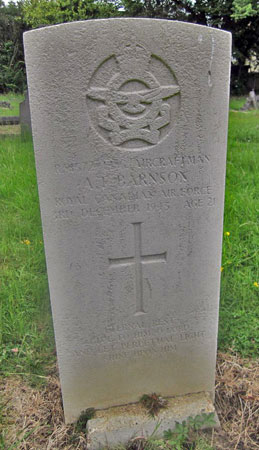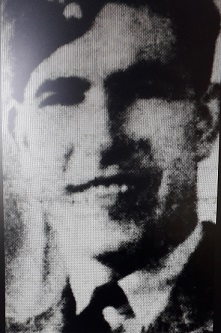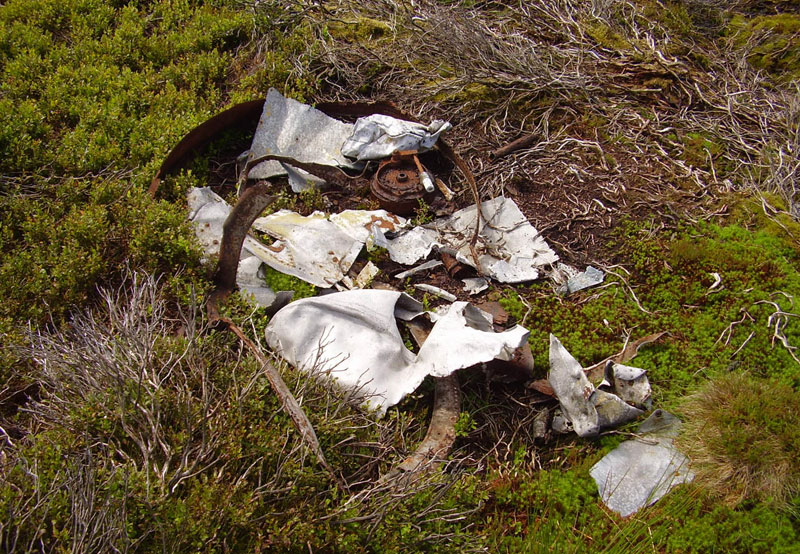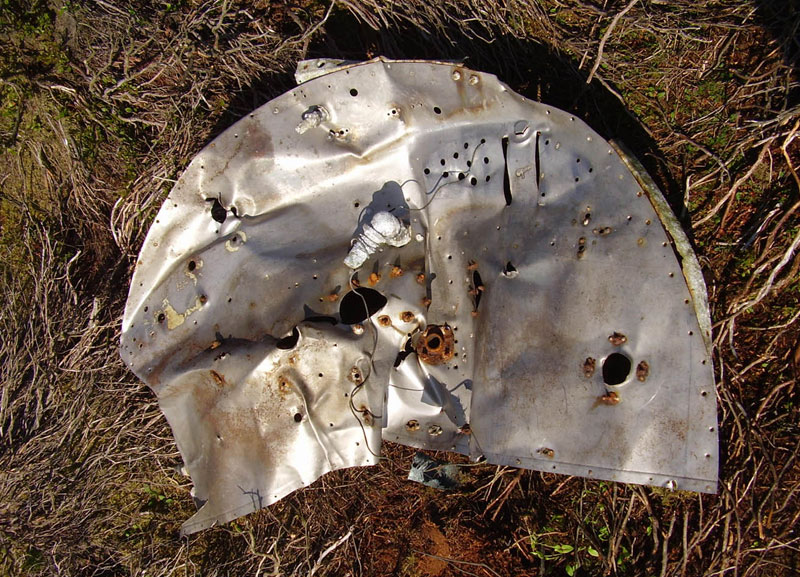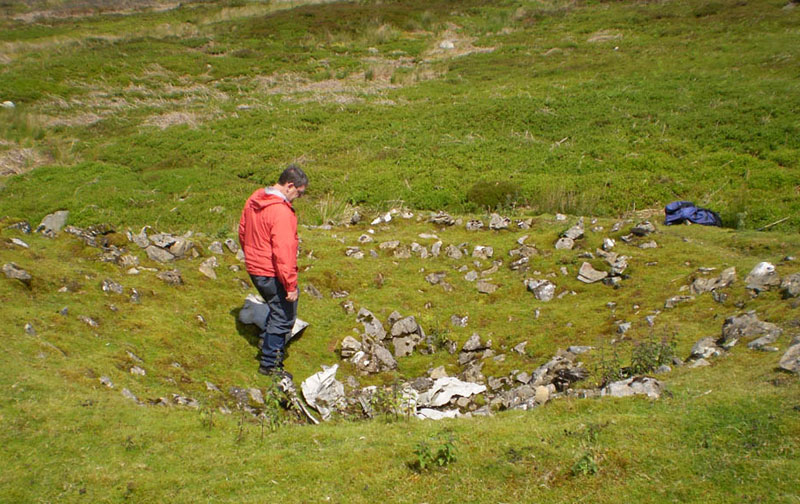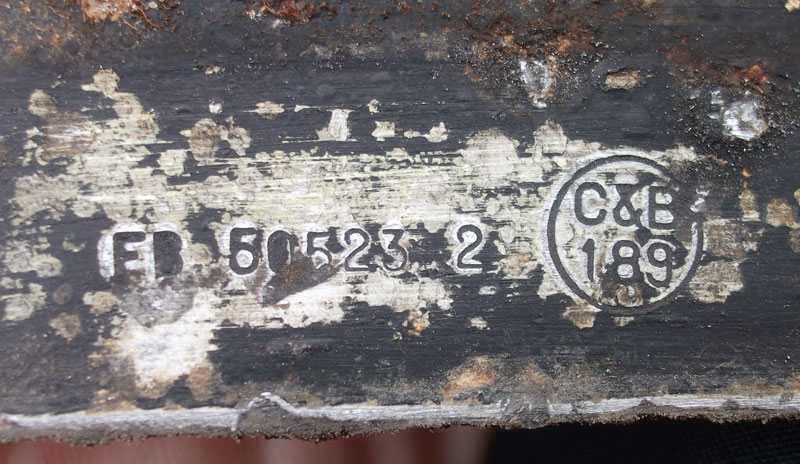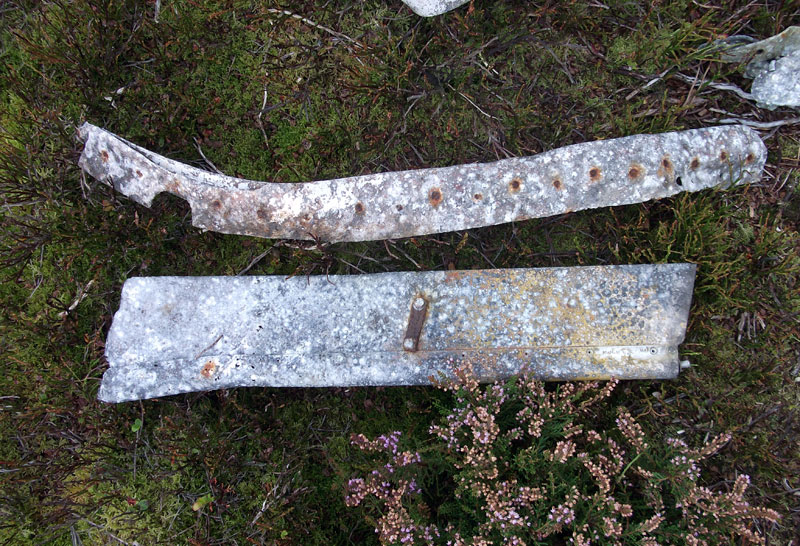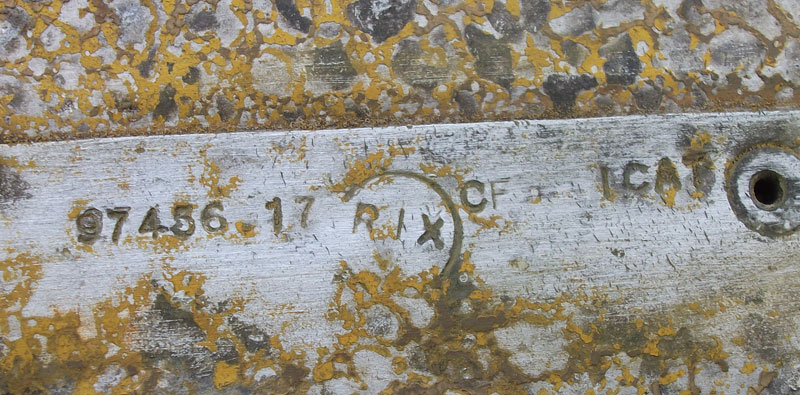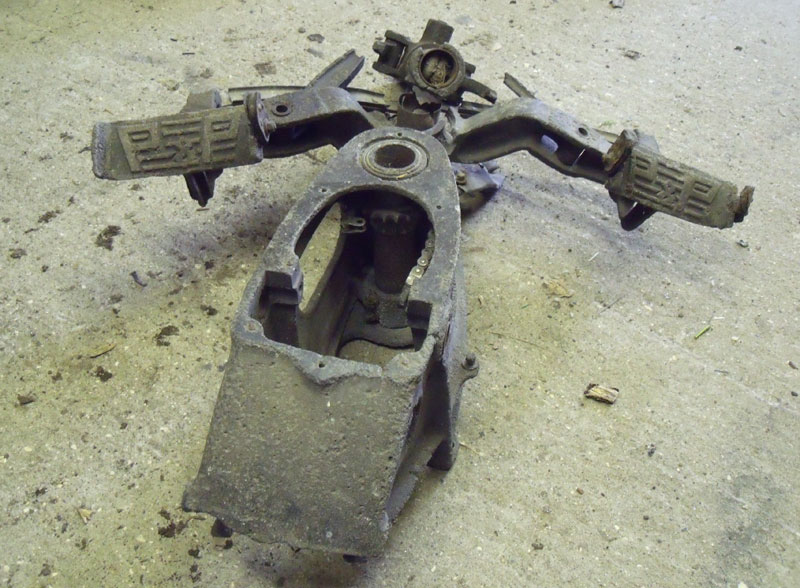This aircraft was part of 1691 (Bomber) Gunnery Flight. The small unit were employed in drogue towing duties allowing for air gunners in other aircraft air-to-air firing practice in the Yorkshire part of Bomber Command. Typically their drogue towing operations took place over a range but their record book does not make mention of exactly where the range was. It does hint at their being one somewhere on the Pennine hills and also one possibly on the North York Moors or off the Yorkshire coast. On 3rd December 1943 the weather over their base at Dalton was recorded in their record book as being an overcast sky with local rain or drizzle. At around 09.00hrs this Martinet took off from Dalton so the crew could undertake a weather reconnaissance flight, this flight was probably checking the weather conditions over the ranges. When the aircraft failed to return to Dalton it was reported overdue and then later as missing. It transpired that possibly this aeroplane was plotted as it headed west, over the Leeds area to the Lancaster area and back toward Yorkshire. It was last seen by an R.O.C. post at map reference qZ.5505 (possibly at West Scrafton?) and was flying southeast at 11.00hrs. Confusion must have resulted and the end result was it could have been absolutely anywhere from the North Sea across to the Pennines.
The general weather that followed in the next couple of weeks was not suitable for carrying out numerous low flying searches of high ground to locate the aircraft so searches were carried out when the weather allowed. On the day the Martinet was reported missing the visibility was poor so no air search was made. On 4th December 1943 air searches were carried out but nothing was found; three 1659 H.C.U. Halifaxes, four Martinets and two Hurricanes flew both land and sea searches. By the 7th a report was made of smoke being seen around seven miles of Sutton Bank at around the time the Martinet was in the air some days earlier so this later checked and nothing found. On 8th December 1943 air searches were being made as the weather allowed and then the same again on 15th December 1943 but as they had no information of where to search this must have been difficult. These searches were probably carried out in the general area of a range which I presume was north-east of Dalton airfield, the unit records state that they searched on the North York Moors which I guess they thought the aircraft had crashed on high ground while trying to overfly it.
On 18th December 1943 aeroplane wreckage was located on West Bolton Moor, north of Askrigg, on the northern side of Wensleydale by soldiers who were carrying out manoeuvres. The 1691 Flight orb records them as being RAF soldiers but the No.6 Group flying control log as being members of an Army unit (which is possibly correct). The army unit contacted No.12 Group, RAF at Catterick airfield to report the discovery and that bodies of two airmen had been found. It appears that a team from Scorton airfield then despatched to the site. The bodies of the two crew were found with the wreckage and were transported to Topcliffe airfield to await burial arrangements. It was thought that the aircraft had been over the area east of Dalton but owing to the weather had completely overshot Dalton on their return and flown into the Pennine hills west of the airfield. These two airmen would be the Unit's only fatalities of the War.
Pilot - F/Sgt John Arthur Colin Kemmett RAFVR (1314338), aged 20. Buried Coney Hill Cemetery, Gloucester (Sec E, Grave 183).
Drogue Operator - LAC Arthur Theodore Barnson RCAF (R/91572), aged 21. Buried Harrow Cemetery (Sec 13, Row 2091).
LAC Arthur Barnson's grave in Harrow Cemetery. He was born Arthur Thordur Bjornason on 26th August 1922 in Winnipeg, Manitoba, Canada and was the
son of Paul and Elizabeth (nee Phelps) Bjornason. His father was born in Iceland but moved to Canada at a young age and was naturalised Canadian in 1907.
His mother Elizabeth was born in Harrow, England and had also moved to Canada when she was young with her family. The Bjornason family changed their name to
Barnson when Arthur was young. He was a student when he enlisted for RCAF service in Winnipeg on 20th January 1941. On arrival in the UK he spent time at
39 Wing, Redhill beginning 15th July 1943, Topcliffe airfield beginning 23rd August 1943 (this appears to have been to 61 Base because when he was posted
to 1691 (Bomber) Gunnery Flight beginning 28th September 1943 he arrived from Wombleton airfield and the Wombleton was part of 61 Base. He was attached
to "Scarborough" for two weeks in early October 1943 before returning to 1691 (B)G Flight where he served as a drogue operator.
John Kemmett was born in 1923 at Merthyr Tydfil and was the son of Sydney Thomas and Flora May (nee Huckins) Kemmett. His parents were married in Gloucester in 1922 and only appear to habe been at Merthyr Tydfil for a short period of time.
His father worked for the Great Western railway as an engine fireman and several years later the family was back living in Gloucester. John had just completed a tour of operations in the Middle East flying bombers when he was posted to 1691 (Bomber) Gunnery Flight on it's formation on 1st August 1943 and
is listed in their orb as first flying solo with them on 12th August 1943.
I first visited the crash site in September 2006 and scattered remains were found suggesting that the aircraft was in a roughly
level flight when it struck the ground. The photograph above shows one collection of wreckage with a broken exhaust collector ring and the aircraft's drogue cable brake unit.
A large part of a fuel tank and half of the engine firewall (shown above) being the two larger items still at the site.
When the RAF cleared the site there appears to have been very little done in the way of removing parts off the moor. Some of the larger sections of metal panelling and ribbing along with heavy items were taken a hundred metres down from the main crash site and dumped in an old mine working. Almost certainly what remained of the mainly wooden construction would have been burnt on site and small items buried. The only larger items never seen or heard of being at the crash site is the Bristol Mercury engine or the undercarriage legs and the assumption is these were the items the RAF took with them so they returned with something to show for their efforts. This collection of parts in the mine working was found by air historians Nick Roberts and Graham Sharpe in 1981. In 1981 the mine working contained the Martinet's foot pedal control unit from the cockpit which contains the distinctive "P&P" Phillips and Powis logo on each pedal, at that time there was no law preventing the removal of items from crash sites and Nick recovered the pedal unit and (at that time) an unidentified part. In 1981 they did not do any further search for aircraft remains higher up the moor and were totally unaware of there being anything where I made my finds twenty five years later. One wonders what may have been at the main crash site in 1981 and what disappeared in the years between our visits.
Alan Hudson in the mine working near the crash site.
The above photograph shows a good part number from a Martinet panel found in the mine working confirming the type,
the "25" number prefix was used it identify Martinet parts. The "P.P." inspection stamp is also visible.
The part above appears to show an item from in the engine bay, the F.B. prefix generally refers to Fedden and Butler who were Bristol aircraft engine
designers, and with the aircraft being powered by a Bristol Mercury engine I would there link the item as located in this area of the aircraft. The "C&B" inspection stamp
meaning is not yet known.
The photograph above shows the tail rudder trim and a section of the rear part of the cockpit canopy. The number shown below was found on the rudder trim but strangely does not show a Martinet prefix.
In 2009 upon moving house Nick Roberts offered this pedal unit to me on the understanding that they would be used or displayed somewhere in the future. The Martinet type is very rare today with only one known restored one in the world it is thought that this pedal unit is probably one of two still in existance. In Spring 2011 I was contacted by Mr Tim Bishop who has set about reconstructing the cockpit section of a Martinet needless to say he was keen to use the pedals in his project. Mr Bishop is now the keeper of the pedal unit to either use it as a pattern or to restore the existing unit. His project is progressing well for the aircraft frame but clearly obtaining an exact pedal unit was proving somewhat problematic for him. The previously described "unidentified" part Nick gave me turned out to be the mixture setting control unit for the engine, a part Tim did not previously have. He now has this item.


